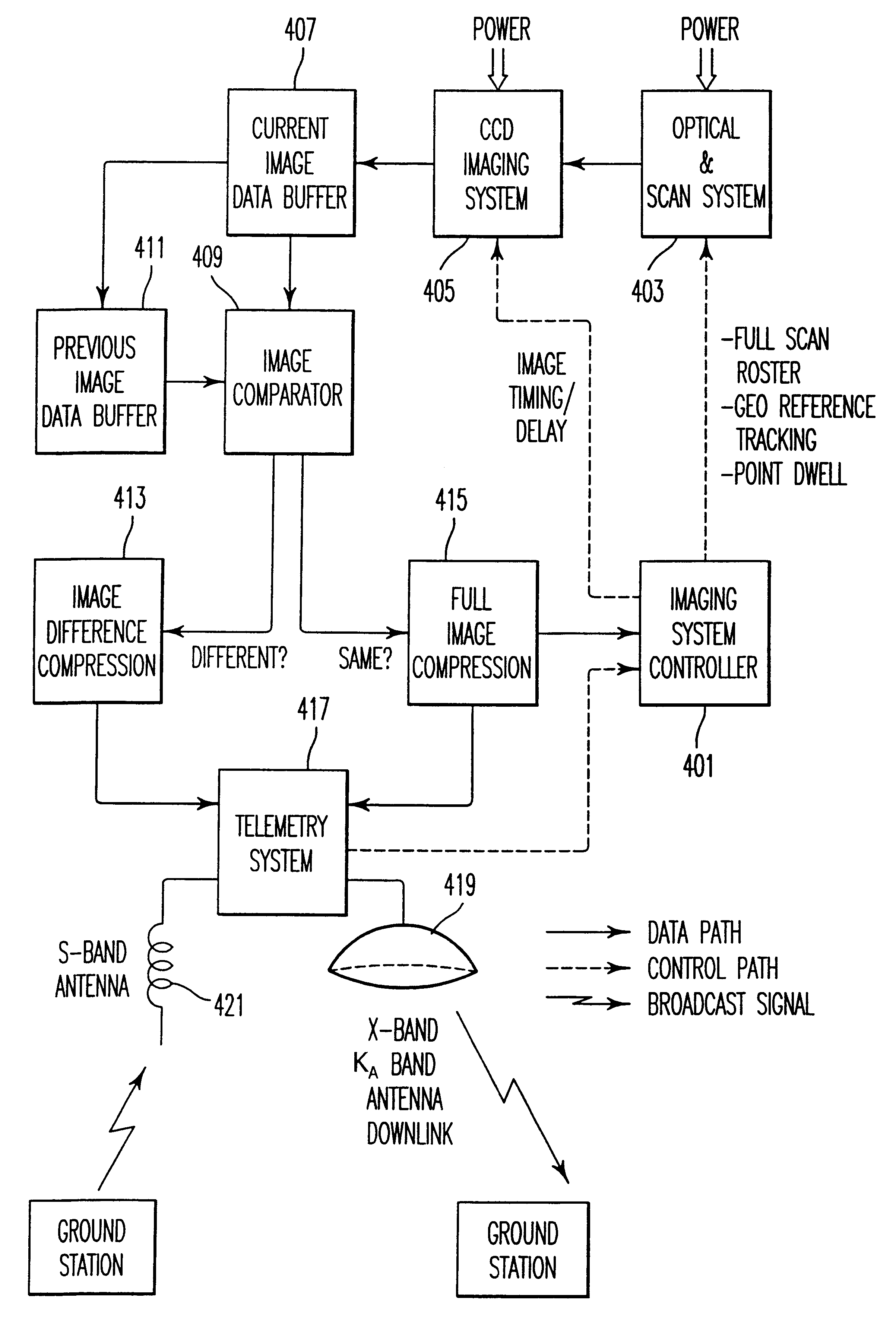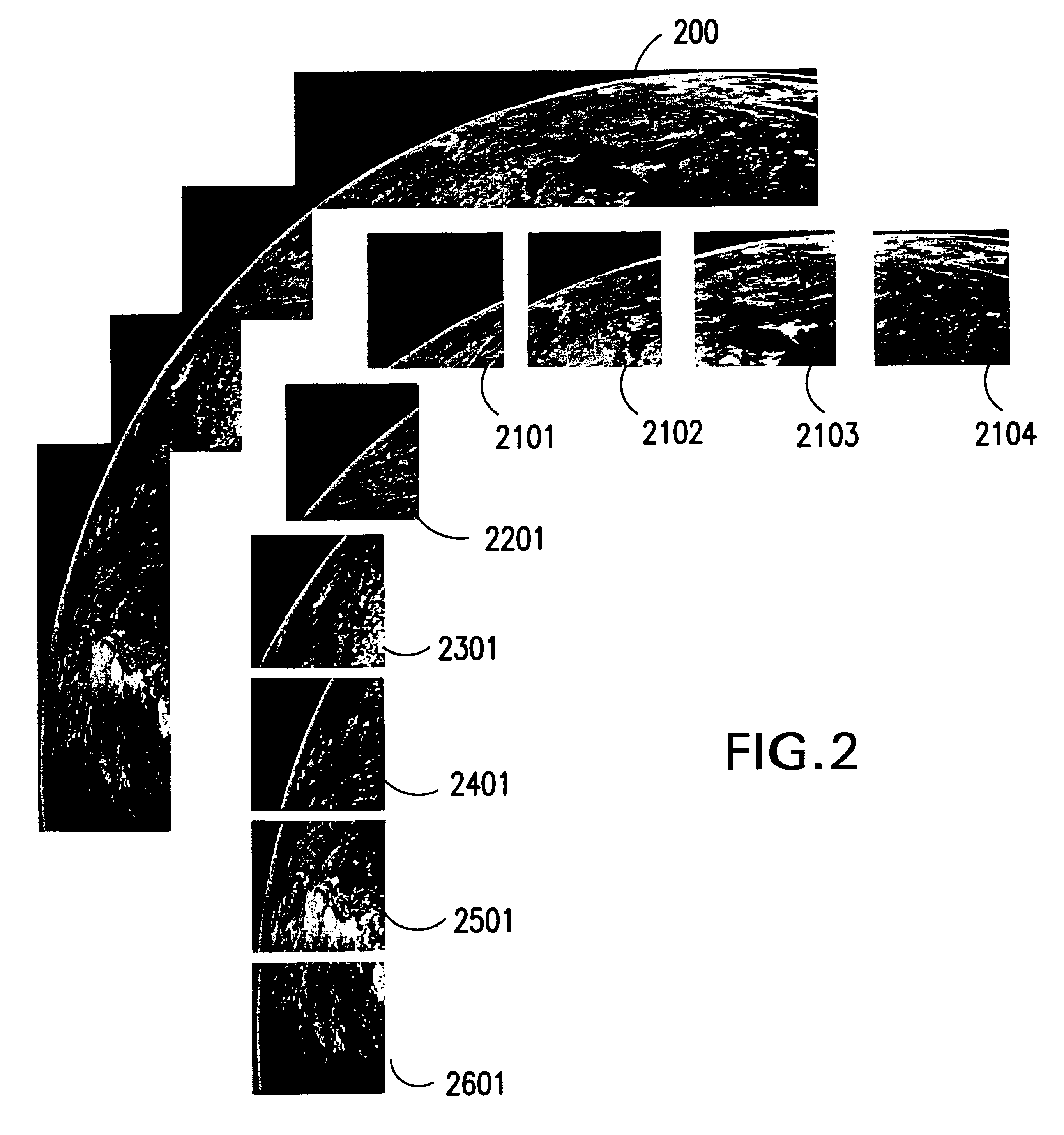Direct broadcast imaging satellite system apparatus and method for providing real-time, continuous monitoring of Earth from geostationary Earth orbit
a satellite system and satellite technology, applied in the field of direct broadcast imaging satellite system apparatus and method for providing real-time, continuous monitoring of earth from geostationary earth orbit, can solve the problems of satellite sensor looking an uneven portion of the earth's surface, significant earth-based events that occur during lapses in coverage of a particular region, and rare srso operations
- Summary
- Abstract
- Description
- Claims
- Application Information
AI Technical Summary
Problems solved by technology
Method used
Image
Examples
Embodiment Construction
Over the past 40 years since the first Sputniks and 30 years after the first weather monitoring satellite was placed in GEO, exploration of the Earth from space remains incomplete and inadequate. As of yet, there exists insufficient mechanisms to observe and study all of the processes that occur day or night and on or near the Earth's surface that may influence life on our planet. Furthermore, there is presently no capability to monitor the entire surface in real-time as a global system and to distribute that data to all parts of the Earth in real-time. The present method, apparatus and system described herein is aimed to provide a comprehensive, simultaneous and real-time observation platform of the Earth's global environment and offer the information gathered from that perspective to a global audience. Accordingly, the coverage is made at temporal and spatial scales and resolutions configured to capture events on Earth that may possibly change over relatively short periods of time...
PUM
 Login to View More
Login to View More Abstract
Description
Claims
Application Information
 Login to View More
Login to View More - R&D
- Intellectual Property
- Life Sciences
- Materials
- Tech Scout
- Unparalleled Data Quality
- Higher Quality Content
- 60% Fewer Hallucinations
Browse by: Latest US Patents, China's latest patents, Technical Efficacy Thesaurus, Application Domain, Technology Topic, Popular Technical Reports.
© 2025 PatSnap. All rights reserved.Legal|Privacy policy|Modern Slavery Act Transparency Statement|Sitemap|About US| Contact US: help@patsnap.com



